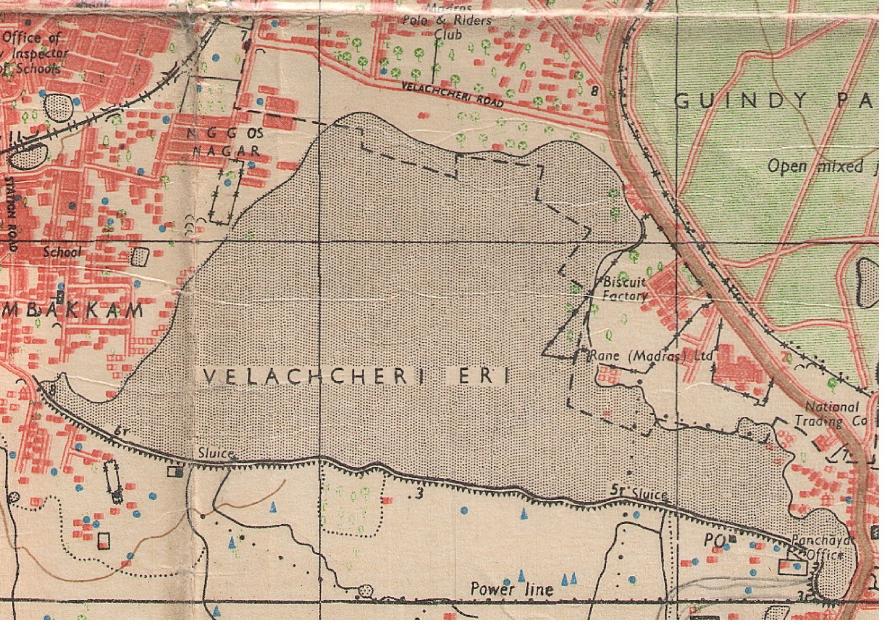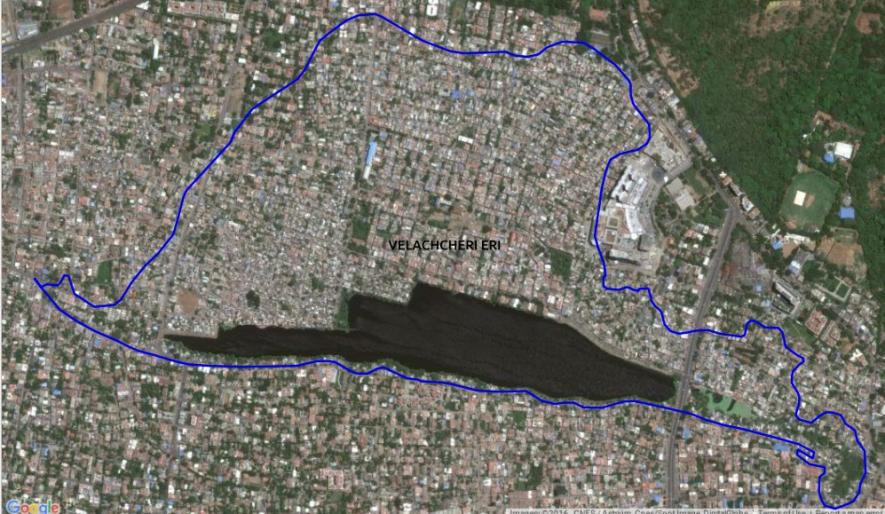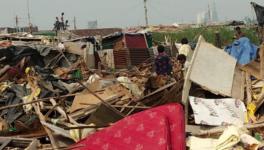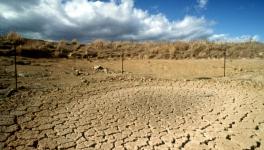Chennai Floods: Who is Responsible For The Mess?
The streets, residential areas and roads of Chennai flooded once again as heavy rainfall lashed the metropolitan last week. Water stagnation continues in several parts of the city even four days after the downpour halted. The inundation in the city and its outskirts sparked off a debate about who is to be held responsible for the present circumstances. Questions of a permanent solution are also being raised.
With all fingers pointing to the state governments and Greater Chennai Corporation (GCC) for the dismal state of affairs, the incident sparked mudslinging between the two Dravidian parties which have been ruling the state for decades.
Over the last 15 years, a sum of Rs 16,000 crore has been spent on stormwater drains and related infrastructure, but nothing has changed to save the city and its residents from inundation.
While experts point out to lack of planning in the stormwater drain construction and encroachments across water bodies, anti-corruption organisations point finger at corrupt practices adding to the woes of Chennai residents.
LOSS OF WATER BODIES
The city of Chennai was once known for its numerous water bodies from the north to the south. The three urban rivers, Kosasthalaiyar in the north, Cooum in the centre and Adayar in the south play a crucial role in carrying rainwater. The Buckingham canal across the city runs parallel to the coast and connects the rivers. The city also had major and minor canals along with hundreds of water bodies.
But, given the fast growth witnessed in the city, the water bodies are encroached and polluted.
"We have not learned anything even after the massive, devastating floods in 2015. Despite several studies and reports to the government, nothing much has changed after six years," said Jayaram Venkatesan of the Arappor Iyakkam, an anti-corruption organisation.
"Apart from the rivers and canals, the city has hundreds of water bodies to store the water and can act as natural rainwater harvesting systems. Unfortunately, the efforts taken to restore the water bodies and the very understanding of the importance of such units is extremely poor," he said.
G Sundarrajan of Poovulagin Nanbargal believed that Chennai has lost its natural drainage system due to rapid urbanisation. "We should not hide behind climate change for poor drainage systems. After 2015, all our drainage systems were supposed to be redesigned to carry 10 centimetres of rainfall in a couple of hours. The previous government claimed to have spent Rs 6,770 crores for flood mitigation, but we don't see any change on the ground,” he said.
WHO ARE THE ENCROACHERS?
Several studies have found the water bodies across the city have shrunk in size due to encroachments. The long list of encroachers includes different departments of the state government, making the government a perpetual defaulter.
"The state government itself has constructed public offices by encroaching the water bodies. For example, after the 39-acre Villivakkam lake was restored, only 15 acres were used for storage. The government has planned a sewage treatment plant and a theme park on 24 acres," accused Jayaram.
The big houses and companies easily escape the process of being evicted from water body encroachments, but the eviction of the poor has been a regular affair.
"Even while resettling the slum dwellers, the government resorts to constructing settlements in water bodies. Semmancheri is a classic example of such violations. We have filed a case to remove the police station constructed in the water body as well," said Jayaram.
The power vested on local bodies to reclassify the lands has been challenged to prevent such water bodies from being used for construction purposes.
Allegations of debris being dumped in the Mambalam canal, leading to the Adayar river was cited as the reason for increased flooding in parts of the city. The Arappor Iyakkam accused the GCC of failing to monitor such violations leading to hardships for the people.
The Chennai Metropolitan Development Authority (CMDA) has been accused of approving plans and residential apartments in water bodies. "Irrigation tanks do not flood during rains. They fill up. If you build your home inside a lake, your home will fill up - not flood. Water doesn't care for CMDA approvals," tweeted environmental activist Nityanand Jayaraman.


The actual area of Velachery tank (above) and the present available catchment area (below) (Courtesy: @NityJayaraman)
Velacheri is one among the several reservoirs whose area has shrunk owing to urbanisation.
ARE THE STORMWATER DRAINS WORKING?
The recent rains once again brought the city to a standstill. The claims of the present DMK government and the previous AIADMK regime on having found a solution for water stagnation problems soon turned out to be hollow.
Janakarajan, a retired professor from Madras Institute of Development Studies (MIDS) pointed out the faulty design of the stormwater drains in the last decade.
"The drains should be scientifically designed to carry water. I doubt if there were any elevation and gravity surveys done before construction. Poor maintenance of the drains also played a role in inundating the city," he said.
The social audits conducted by the Arappor Iyakkam confirmed such technical glitches in designs, Jayaram claimed. "There are drains across the city, but they were not draining the rainwater, but stagnated the water. There are a lot of missing interconnections to carry the water to the storage bodies and issues of gradients were clearly visible" he said.
Janakarajan also cited the increasing population and decreasing urban space as another reason for the issues faced by the city.
"The population density in Chennai has increased to 34,000 from 26,000 per square kilometre in 2011. The per capita drainage space has reduced as a result of increasing population density and infrastructural development. A total restructuring of the drainage system is the only solution,” he insisted.
The GCC engaged heavy motor pumps to drain the water from the drains, clearly exposing the lapses in the drainage system being insufficient to save the city from inundation.
WAS THE GOVT PREPARED BEFORE THE MONSOON?
Just before the North-East Monsoon (NEM) set in, the DMK government claimed to have de-silted the stormwater drains. But, when the situation of inundation worsened, it blamed the previous regime for the situation.
The chief minister accused the previous AIADMK regime of indulging in corruption in constructing the stormwater drains and announced an enquiry committee to study the problems pertaining. The AIADMK leaders, in turn, accused the DMK government of being under-prepared for the NEM.
"In parts of the city, the rainwater was drained through the sewer pipes and not through the drains, which clearly indicates the failure of the infrastructure. The GCC and Chennai metro water authority usually allege each other for the issue, exposing the lack of coordination,” said Jayaram.
He also claimed that in a recent tender floated for Rs 120 crores by GCC, Rs 30 crores was allocated for constructing missing links while Rs 90 crores have been earmarked for destroying and reconstructing existing drains.
The capacity of the major storage tanks around the city has also reduced for want of the de-silting process. "The removal of a layer of the silt will help increase the capacity of the tanks and reduce flooding during heavy rains," he said.
Get the latest reports & analysis with people's perspective on Protests, movements & deep analytical videos, discussions of the current affairs in your Telegram app. Subscribe to NewsClick's Telegram channel & get Real-Time updates on stories, as they get published on our website.
























